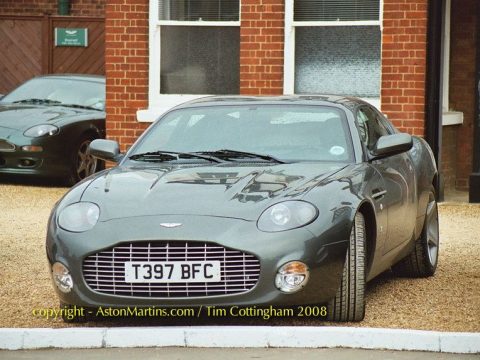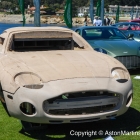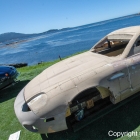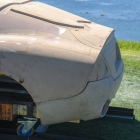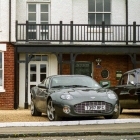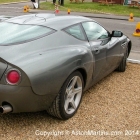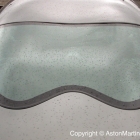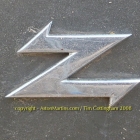By August 2002, the pre-production car was unveiled to press and potential customers in an exclusive gentleman’s outfitters in Saville Row, London, just a year after the chance meeting at Pebble Beach. The DB7 Zagato was well received indeed even with a price, estimated to be in the region of £160,000, a £60,000 premium over the standard car. AM stated that production would commence once sufficient orders had been received. Initially it was decided that between 75 and 99 could be built but after huge interest, the run was capped at 99 with many more customers on a waiting list. Collectors were no doubt very keen to own such a car; prior to the DB7 Zagato, the joint efforts of AM and Zagato had only ever produced 109 cars. The design was principally the work of Zagato but with input from Henrik Fisker, who at the time was Aston Martin Head of Design.
The production DB7 Zagato was subsequently unveiled to the public at Paris Motor Show in late September 2002, but sadly, AML decided that as every car has already been pre-sold, it wasn’t necessary to be displayed at the British Motor Show at the Birmingham NEC in late October 2002.
The prototype car known internally as ‘Georgia’, initially started life as a early production DB7 Vantage Volante, which explains the ’99 ‘T’ registration plate. Initially the wheels were of a different design and the wing mirrors were the Citroen CX type as used on the DB7 i6. By the time that I saw the car at Newport Pagnell in May 2003, the wheels and wing mirrors had been changed to those of the production car. In addition to this prototype which had retained the standard 420bhp engine, a second confirmation prototype was built from scratch to full Zagato specification. This car given the last chassis number in the series, 700100, was retained by AML following time as a press demonstrator.
A very rare opportunity to photograph the DB7 Zagato styling buck (‘master’ in Europe) came about when it was displayed alongside chassis number 17 (perhaps the only US registered DB7 Zagato) at the 2007 Pebble Beach Concours d’Elegance. The buck is made of Epo-wood over wooden box sections that are further mounted on steel beams with trolley wheels attached to allow it to be moved easily. The buck was used by Zagato in Turin to shape the actual panels of the production cars.



